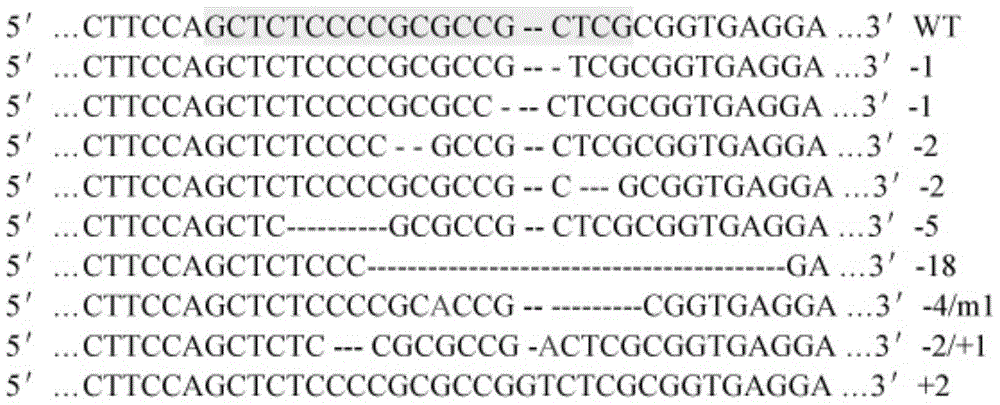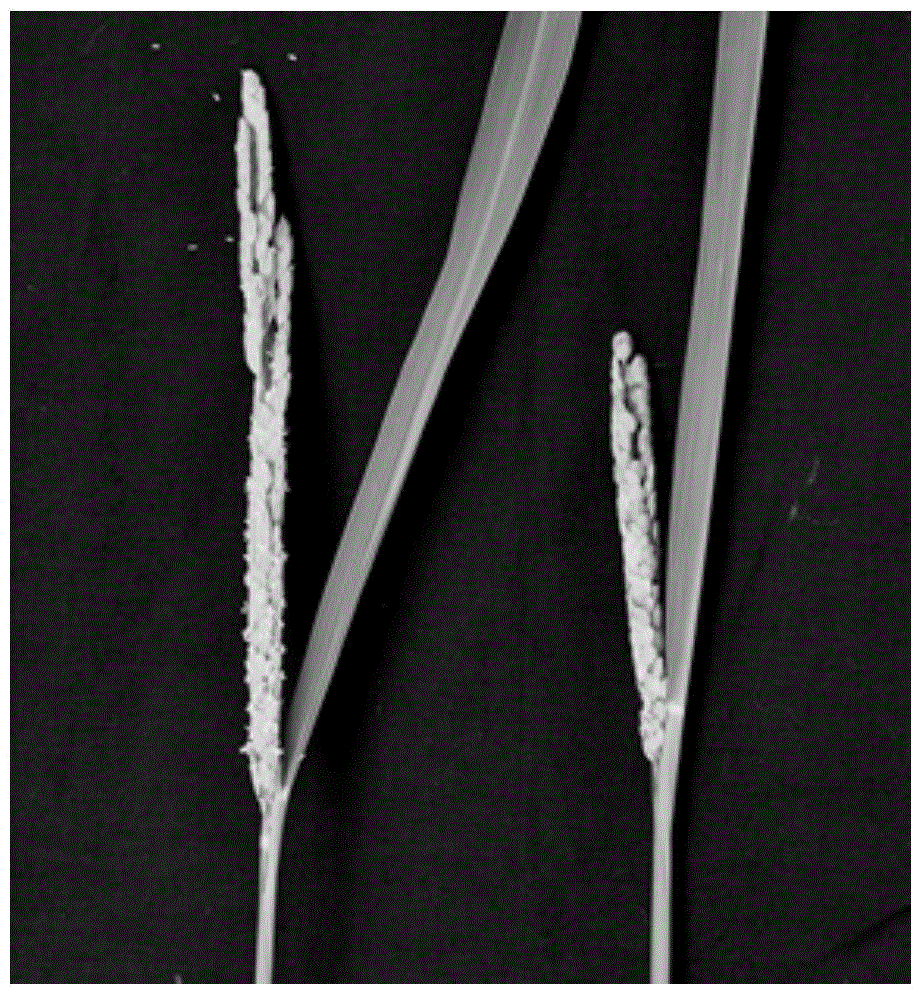A kind of breeding method for creating closed glume pollination rice material
A technology for pollination and paddy rice, applied in the field of rice biotechnology breeding, can solve the problems of limited genetic mutation resources, technical difficulty, long breeding cycle, etc.
- Summary
- Abstract
- Description
- Claims
- Application Information
AI Technical Summary
Problems solved by technology
Method used
Image
Examples
Embodiment Construction
[0038] The test methods used in the following examples are conventional methods unless otherwise specified.
[0039] The materials and reagents used in the following examples can be obtained from commercial sources unless otherwise specified.
[0040] The breeding method adopted in an embodiment of the present invention is described below
[0041] 1. Preparation of a recombinant vector for rice DEP2 gene targeting.
[0042] 1.1, select the nucleotide sequence GCTCTCCCCGCGCCGCTCG at positions 39-60 after the translation initiation codon ATG in the first exon of the rice DEP2 gene (LOC_Os07g42410) CGG , (the underlined part is 5'-(N) X -NGG part in the NGG-3' structure), as the targeting site.
[0043] 1.2. Synthesize (BGI) forward oligonucleotide chain (DEP2KO1P1) and complementary reverse oligonucleotide chain (DEP2KO1P2) according to the selected target site,
[0044] The specific sequence is:
[0045] DEP2KO1EP1: TGTG GCTCTCCCCGCGCCGCTCG
[0046] DEP2KO1EP2: AAAC ...
PUM
 Login to View More
Login to View More Abstract
Description
Claims
Application Information
 Login to View More
Login to View More - R&D
- Intellectual Property
- Life Sciences
- Materials
- Tech Scout
- Unparalleled Data Quality
- Higher Quality Content
- 60% Fewer Hallucinations
Browse by: Latest US Patents, China's latest patents, Technical Efficacy Thesaurus, Application Domain, Technology Topic, Popular Technical Reports.
© 2025 PatSnap. All rights reserved.Legal|Privacy policy|Modern Slavery Act Transparency Statement|Sitemap|About US| Contact US: help@patsnap.com



